Ongoing research builds capacity, improves practices
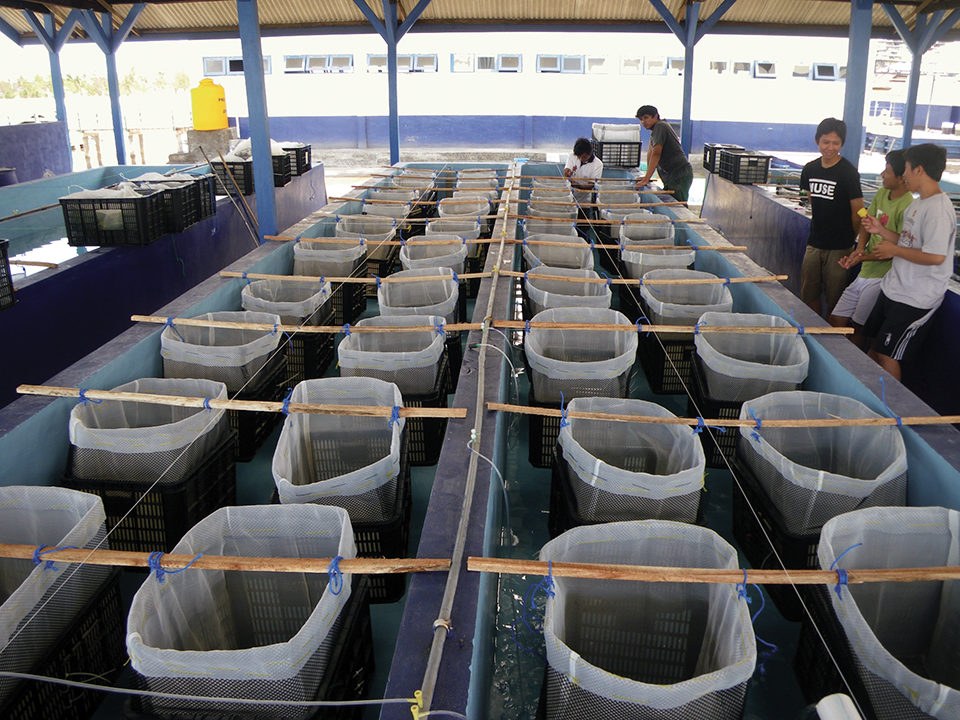
Culture of the tropical spiny lobster (Panulirus homarus), is an emerging industry in Lombok, Indonesia, with a farm gate value of approximately $2 million in 2011. Typical practices involve the collection of wild seed lobsters, which are stocked in floating sea cages and fed solely on low-value fishery products to market size of about 200 grams.
In 2010, with the financial support of Australia’s Centre for International Agricultural Research, a collaborative project led by Dr. Clive Jones with the assistance of the Indonesian and Vietnamese governments was tasked with addressing the sustainability of established and emerging spiny lobster industries.
This multinational project involves numerous institutes and lobster species, and focuses on the identification and monitoring of seed collection and growout production.
Industry development
Lombok is a small island in the Nusa Tenggarra province of Indonesia. This tropical region experiences plenty of sunshine and low rainfall, which makes it well suited to land and sea mariculture. Lobster farming in the south of Lombok began in 2000, when opportunistic farmers began growing juvenile lobsters that settled on their fish cages or seaweed racks. Farming is reliant on the collection of wild seed, which limits species selection.
In Lombok, the sand lobster makes up 90 percent of the annual catch of 600,000 seed and is the major culture species for the region. In the last five years, production has almost doubled from 35 to 61 metric tons (MT) with an estimated industry value of $2 million in 2012. The sand lobsters are grown in floating cages and fed small fish until harvested after six months, as they near maturity.
The cost of sand lobster seed ranges from $0.30 for an unpigmented free-swimming pueruli to $1 for a small juvenile with a carapace length of 10 to 12 mm. During the nursery stage, lobster seed are stocked in small floating cages containing seaweed for shelter and fed chopped small fish.
Findings from a 2008 project by Australia’s Centre for International Agricultural Research identified the high mortality rates of over 50 percent for seed lobsters as a serious constraint to the sustainable development of spiny lobster farming in Asia. High mortalities during the nursery stage have been widely reported in Vietnam and Indonesia.
Resolving this issue would have an immediate positive impact on the industry and is also critical for ensuring the viability of the advanced hatchery technologies being developed by the Department of Agriculture Fisheries and Forestry in Australia.
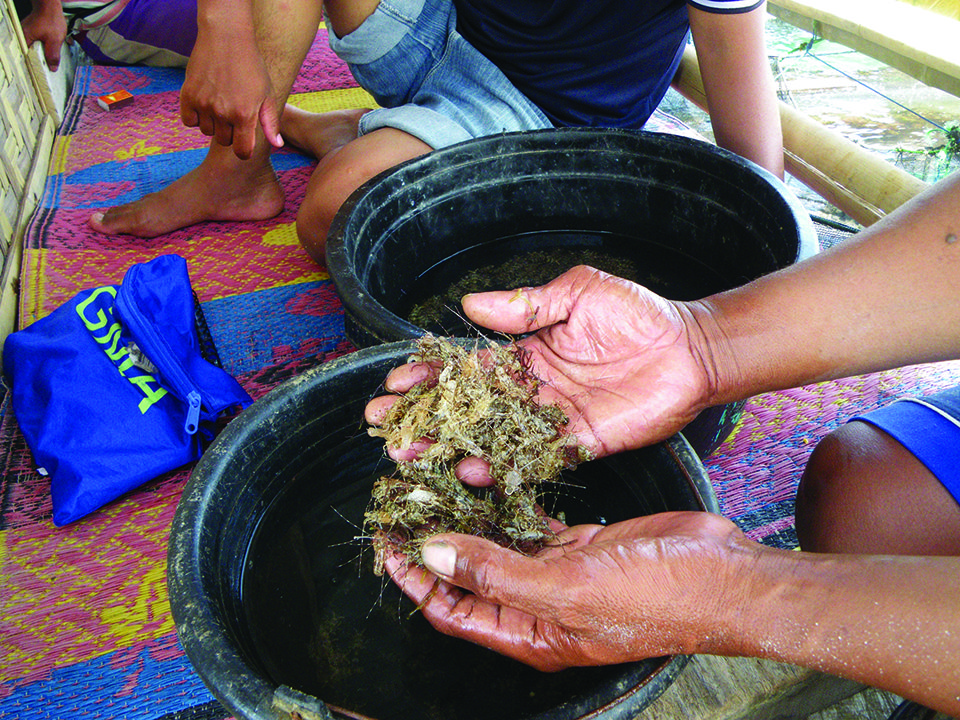
Student participation
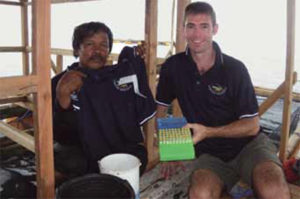
An initiative of the current project is the invitation of Indonesian University students to participate in training that culminates in rigorous spiny lobster production experiments. Selected students from universities in Bogor, Diponegoro and Gadjah Mada, Java; and Mataram in Lombok are housed in accommodations provided by the Marine Aquaculture Development Centre, Sekotong, in Lombok.
For three months, the students are immersed in the daily operations of a research station. During the first six weeks, they receive training and support from visiting Australian scientists before conducting experiments to evaluate a variety of methods aimed at improving the survival of nursery-stage lobsters.
The areas studied include general husbandry, stocking density, shelter and feed type. The studies are conducted with juvenile sand lobsters housed in replicated cage or tank systems. The seed lobsters are sourced from the main commercial collection area at Gerupuk and Awang bays. The duration of the experiments is typically two to three months. Each experimental unit is provided with shelter, aeration and 1.5 L/minute water flow with the intent of maintaining ambient water temperatures around 28 degrees-C and 1,000 percent water exchange daily.
Formulated feeds
The formulated feed tested is based on research completed in Australia on a similar species of spiny lobster (Panulirus ornatus). The results have been encouraging with higher survival rates achieved for lobsters fed moist formulated feed compared to those fed on the local diet of chopped small fish (Fig. 1). In addition, greater growth and related synergistic benefits are apparent when lobsters are fed a blend of moist formulated feed and small fish (Fig. 2). Demonstration Cages The implementation of demonstration cages is another exciting component of the project. These grow-out cages, run by local entrepreneurial farmers in established lobster areas, demonstrate best production practices. Based on results from student-run experiments, it was decided the lobsters at these farms would be fed a diet of small chopped fish and formulated feed. The demonstration cages have contributed to expansion of lobster farming in the area, which went from approximately 160 cages to 450 cages in the last three years.
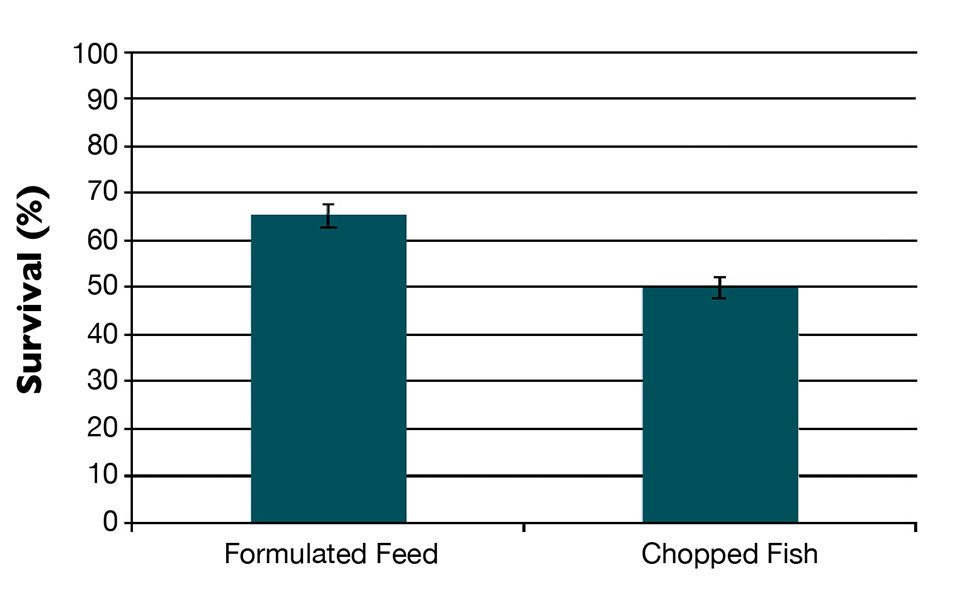
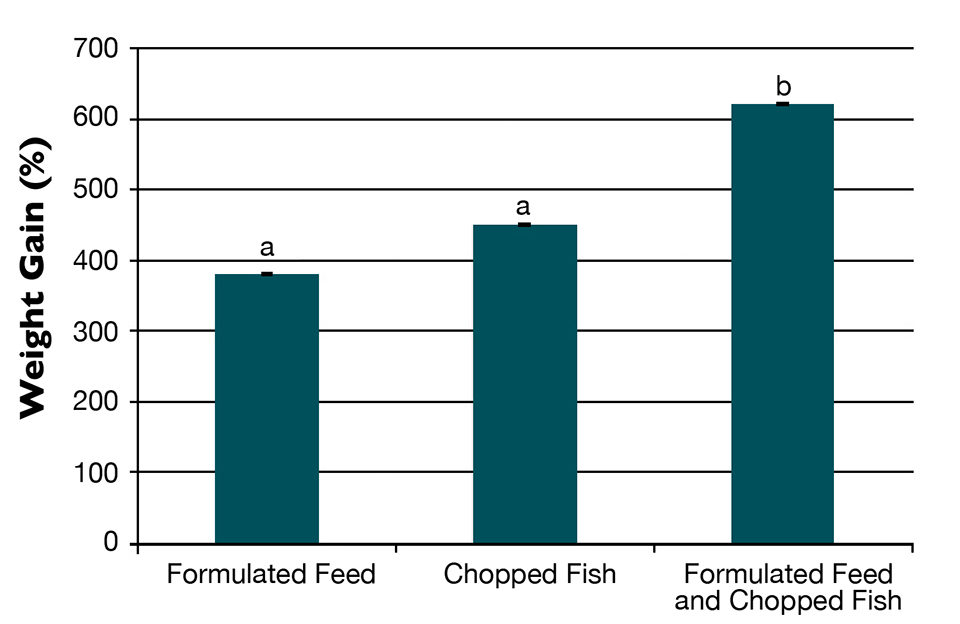
Currently, consistent use of formulated feeds in Lombok is evident only at the demonstration level. This is due to the low cost and easy availability of small fresh fish. However, awareness of the advantage of formulated feeds is high, and feedback from farmers suggests the adoption of a high-performing, competitively priced feed would be rapid.
Perspectives
The presence of the Australia Centre for International Agricultural Research project during the development of the lobster industry in Lombok has been timely. Progress is being made in identifying factors that contribute to high mortality in seed lobsters, and the future for formulated feed adoption is positive. Improved practices that emerge at the village level have the capacity to substantially improve the sustainability of international spiny lobster farming.
(Editor’s Note: This article was originally published in the September/October 2012 print edition of the Global Aquaculture Advocate.)
Authors
-
Simon J. Irvin
CSIRO Marine and Atmospheric Research
Bribie Island
Queensland 4507 Australia -
Scott Shanks
Department of Agriculture Fisheries and Forestry
Cairns, Queensland, Australia
Tagged With
Related Posts

Intelligence
Aquaculture UK: Stepping up to the plate
There’s considerable opportunity to grow the UK aquaculture industry. At the Aquaculture UK exhibition and conference in Aviemore, Scotland shows the way.

Innovation & Investment
Aquaculture is winning, Rabobank analyst explains
Aquaculture is the “winning protein,” according to a new Rabobank report that its author, Gorjan Nikolik, said is intended to draw the bank’s agro-industry clients to opportunities in the fish farming business.

Responsibility
A look at integrated multi-trophic aquaculture
In integrated multi-trophic aquaculture, farmers combine the cultivation of fed species such as finfish or shrimp with extractive seaweeds, aquatic plants and shellfish and other invertebrates that recapture organic and inorganic particulate nutrients for their growth.

Responsibility
A look at various intensive shrimp farming systems in Asia
The impact of diseases led some Asian shrimp farming countries to develop biofloc and recirculation aquaculture system (RAS) production technologies. Treating incoming water for culture operations and wastewater treatment are biosecurity measures for disease prevention and control.


